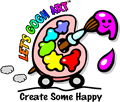We’ve written and shared articles on the benefits of art education. Unfortunately, there are still many who still feel that the future lies solely in math and science. Although math and science are important, art education tends to get pushed to the background in order to focus on Science, Technology, Engineering and Math (STEM) programs.
Throughout the country, we are seeing a cutback in funds to art education. A USA Today article cited that federal funding for the arts and humanities receives about $250 million a year, whereas the National Science foundation hits a higher $5 billion mark. Yet, we are not arguing that the arts should prosper to the detriment of math and science, and other curriculums. On the contrary, arts and other subjects should be used interchangeably to promote and strengthen each other. In past blogs, we have applauded the work of teachers who use different subjects to strengthen each other, also known as cross-curriculum. This has been proven to be effective because not all children (or adults for that matter) learn the same. Some learn better through visual representation (learning about ratios and proportions by drawing pictures to scale) or through a historical lens (learning about famous artists and tying them into their contemporary times) or through engineering (building 3D structures based on certain specifications).
To take it a step further (and because we wholeheartedly believe art is important in all education), art itself helps to promote certain brain functions. For example, playing an instrument helps to focus a student’s attention on discipline and concentration and can be intertwined with their math skills. Painting and drawing teaches children that there are no simple black and white answers in life, but rather that the world is interpreted through the artist’s eyes and can have many interpretations. This promotes the ingenuity that is so highly sought after in the Math and Science fields.
Another angle that we can look at in regards to the benefits of art education is what our education system’s end goal is. Time and time again, we have heard politicians and educational leaders advocate keeping up with the rest of the world’s technology. Similar to the Space Race of the 1950s and 1960s, we want to help the next generation come up with the next big idea. Art can help. For what does one do in art? At the simplest level, an artist looks, interprets and creates. Steve Jobs LOOKED at what the world needed, INTERPRETED the way to get there and then CREATED the technology we now link with Apple. And Steve Jobs understood the necessity to couple the arts and humanities with technology, “It is in Apple’s DNA that technology alone is not enough—its technology married with liberal arts, married with the humanities, that yields us the results that make our heart sing.”
Thankfully, many agree with the importance of art education and champion the simple equation of STEM + Art = STEAM. So before you begin to take a stance on whether the future lies in the arts or math and sciences, take a step back and consider that maybe one is not more beneficial than the other, but rather that they are stronger when paired together. Maybe that’s where the future of our educational system lies.

